Why wild camping?
If you’re wondering, why wild camping? In a tent? Stay tuned – I promise it redeems itself.
As with mainland Scotland, the Outer Hebrides permit wild camping anywhere you might desire (that’s not private or specifically excluded). This generates fantastic opportunities for a truly unforgettable holiday!
In the volatile wilderness of the Outer Hebrides, nothing beats the adventure of a tent, which, equipped with reasonable equipment, is not so challenging as might be anticipated. Additionally, wild camping provides a relatively inexpensive way to explore.
If considering Scotland’s Outer Hebrides, they actually consist of over 100 islands, though only 15 are inhabited. Each of these is connected to at least one other island by a land transport route, though can only be accessed from the mainland by ferry.

For many, the isolation is precisely what makes it so attractive.
I personally visited Barra, Vatersay, Eriskay, South and North Uist, Benbecula, Flodaigh, Berneray, Harris and Lewis, roughly in that order. Together, Lewis and Harris form the largest island in the British Isles (ignoring Great Britain and Ireland), and are comfortably the most populated Outer Hebridean island.
This post also appeared on Tales from a Tent.
Getting around:
Please explore this interactive map hovered over the Isle of Lewis.
This could be the most important consideration for any trip. The trade-off to wild camping in picturesque solitude is the difficulty in getting there. Thankfully, owing to modern transport developments, that difficulty is significantly mitigated.
(Do consider that, as of writing, only essential travel is permitted due to COVID restrictions.)
Airports are located in Stornoway (Isle of Lewis), Benbecula, and Barra, so flying into the Outer Hebrides is very possible. Causeways now connect many of the islands, so they can be accessed by land vehicle.
You might enjoy:
Wandering the British Isles – a ‘staycation’ road trip
Today, I fancied a change of pace from the explosive misery of current affairs. Last summer, whilst attempting to plan a holiday amidst the chaos, I realised an unprecedented (who else enjoyed the overuse of that word?) opportunity for a ‘staycation’, remaining in the British Isles. Contemplating a typical escape to the Mediterranean was fraught with…
This is supplemented by regular ferry routes between unconnected islands. I would recommend visiting as many as possible, since each island boasts unique features and activities. The Caledonian MacBrayne ferry company offers convenient travel between the islands, including ‘Hopscotch passes’, which include a packaged itinerary with several links.
Driving in a private vehicle is straight-forwards, the roads primarily open and quiet. There are also less consistent public transport options running on the islands, though some are specifically by request, so plan ahead accordingly.
Ferry tickets are considerably more expensive when boarding with a vehicle. It is instead entirely possible to traverse the islands on foot, or by bike, following the ‘Hebridean Way’ route. Tracking 185 miles from Vatersay all the way to the Butt of Lewis, it enables explorers to fully appreciate the raw spectacle of the landscape.
Though it might seem daunting, there is truly no rush. Every inch of the Outer Hebrides is beautiful, and affords a new campsite each night.
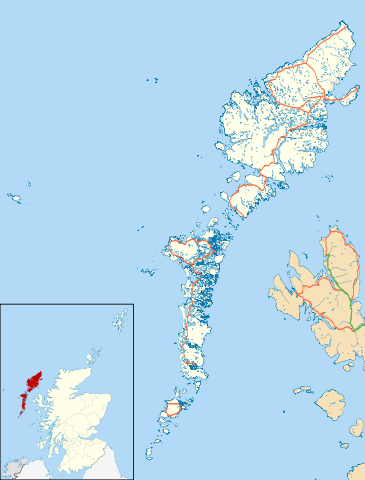
Places to wild camp
As a wild camper, you are bound to certain responsibilities. Be respectful of the area around you, and follow the basic rules to ensure you remain a considerate guest in this environment. Avoid any private land; heed any fences or signs. Don’t leave any rubbish, cause excess noise, or incite any deliberate disruption.
Ultimately, this is only to preserve the natural beauty for future campers, and should not inhibit personal enjoyment.

Walking into the untamed Outer Hebridean wilderness 
Eriksay beach, Outer Hebrides 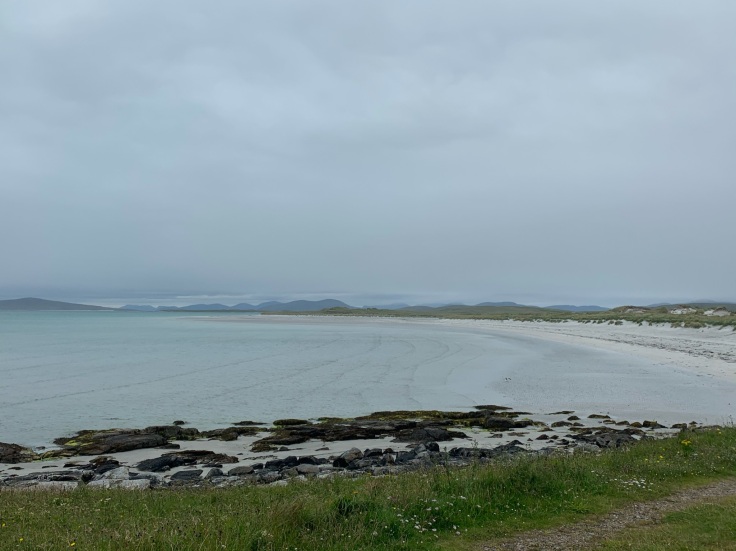
North Uist’s windswept Traigh Lingeigh Beach 
Wonderful views from the relative comfort of a camping chair 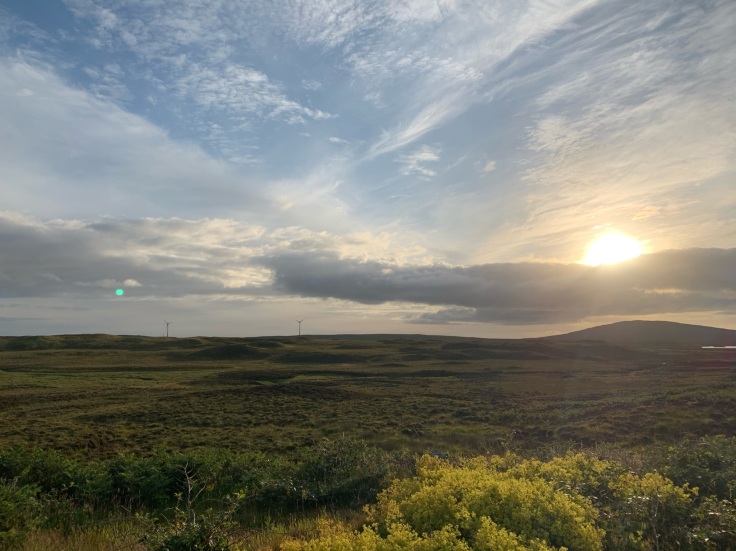
Some of the dazzling Outer Hebridean landscape 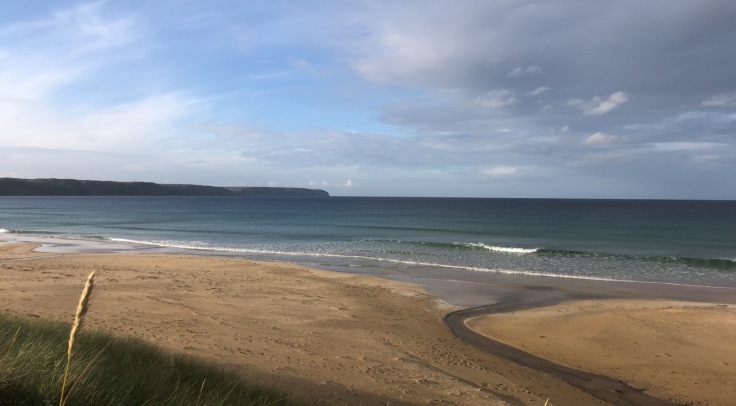
The sparkling seas from our wild camping spot
I most enjoyed camping by the spectacular coasts. Though they tended to be more exposed as sites, I often found that wind corresponded with fewer midges. Having failed to bring any insect protection on my trip, this was a great advantage.
The beaches were stunning, melting into perfectly clear waters that resembled the Mediterranean on warm days, never ending without vivid sunsets unleashing crimson explosion across the waves.
Vatersay beach, the most Southern point of the Hebridean Way, provided my first night wild camping, though won’t be soon forgotten. The surprisingly warm turquoise waters bath spotless, white sands, which rise into tall grass providing adequate protection from the elements. The nearby Visitors Centre (when open) also allows explorers to indulge in their shower facilities.
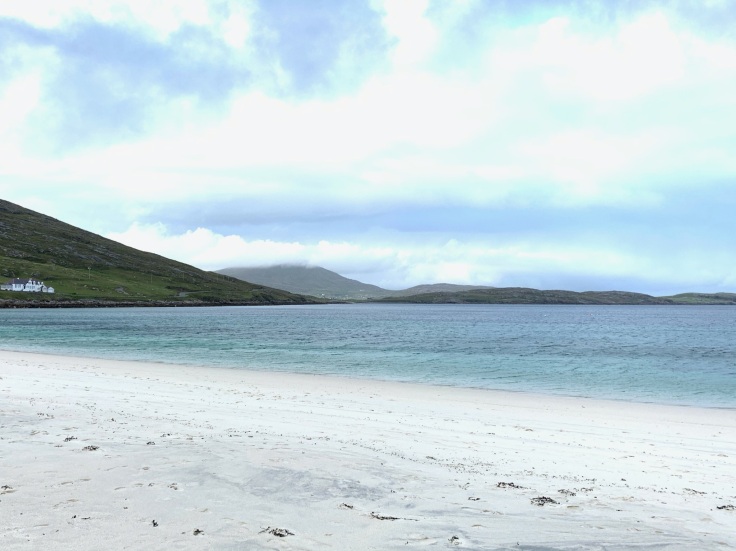
In addition to camping on the shores of sparkling seas, many of the lochs are blissfully tranquil. Loch Langais is an impossibly perfect expanse of implacable water, capturing the entire sky and surroundings in a mirror-like sheen. A small, unofficial car park can be used off the road towards the Langass Lodge, whilst the loch lies just beyond it. The silence is soul-enriching.

Impressive as the wild camping potential is, a splattering of campsites afford the opportunity to recover from any exhaustion, whilst remaining cheap. Huddled against the tidal waves of Loch Stockinish, Isle of Harris, the Lickisto Blackhouse Campsite is a wonderful blend of ‘glamping’ and wild camping. Secluded pitches are connected to central buildings, for washing and relaxing, all fully immersed in gorgeous scenery.
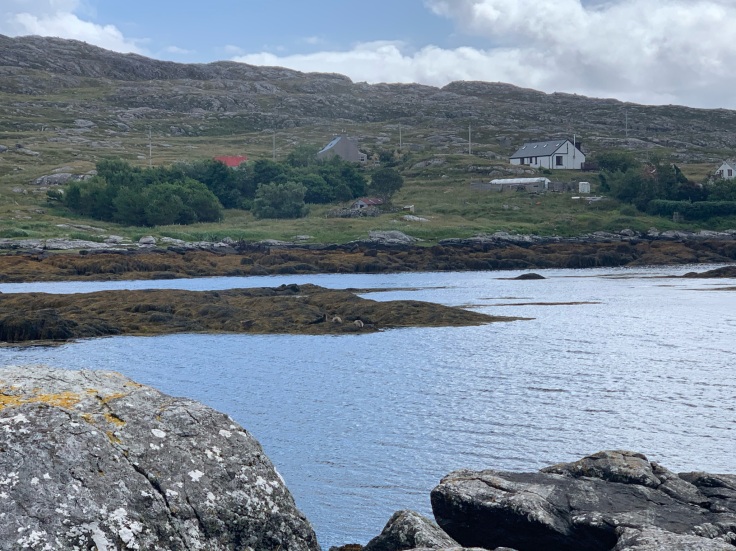
What to do in the Outer Hebrides?
Exploring
Armed with the freedom of tented wild camping, I dedicated most days to walking the untamed acres of soggy marshland. Whilst in the Outer Hebrides, I averaged over 15km per day for the fortnight. Naturally, exploring to this extent would not satisfy everyone.
For the more intrepid, many routes can be sourced through ‘Walk highlands’, which provided me much inspiration. Generally easy to follow, expect to be challenged, both by the marshy terrain, and in navigating the often featureless plains.
Circling Loch Druidibeg, located in a nature reserve on South Uist, is very pleasant, as is venturing across to the small Isle of Flodaigh, which is frequently visited by inquisitive seals clearly visible dotted between various islets. The Coffin Trail, on the Isle of Harris, is another enjoyable walk with a vaguely unsettling history: given the rocky ground, deceased islanders were carried over 14 miles to the island’s other side where they could be buried.

Wildlife
Across the Outer Hebridean islands, a plethora of different wildlife species inhabits spaces largely untouched by humans. Though not exclusive to wild camping, visitors can select from a variety of different companies to embark upon walking or boat tours. Sadly, during my visit I was unable to fully utilise the proximity of this abundant nature, but was still able to visit the Eagle Observatory Centre on the Isle of Harris.
Two nesting golden eagles occupy this territory, whilst the centre’s visitor log reported that other birds and red deer can also be spotted.
Amongst other sightings, over the course of my trip I saw Grey seals, gannets, otters, and fishing eagles. Depending on the season, boating tours can encounter orcas, basking sharks, and dolphins.
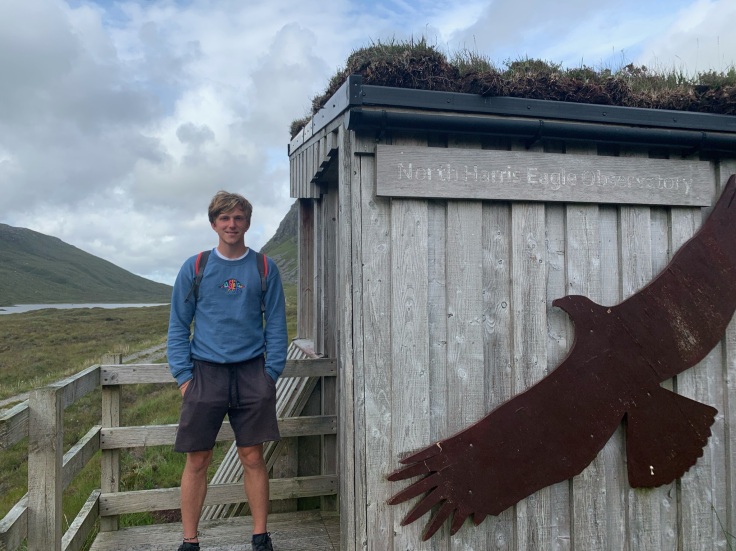
History and culture
Scotland’s Outer Hebrides also exhibit a rich history to be explored, dating back to the late Neolithic era. The famous Callanish Stones, on the Isle of Lewis, are a standing circle presumed to have been involved in Bronze Age rituals, surrounding a central monolith. Several myths enshroud this formation, since the original purpose will never be discerned, though popular folklore describes them as petrified giants.
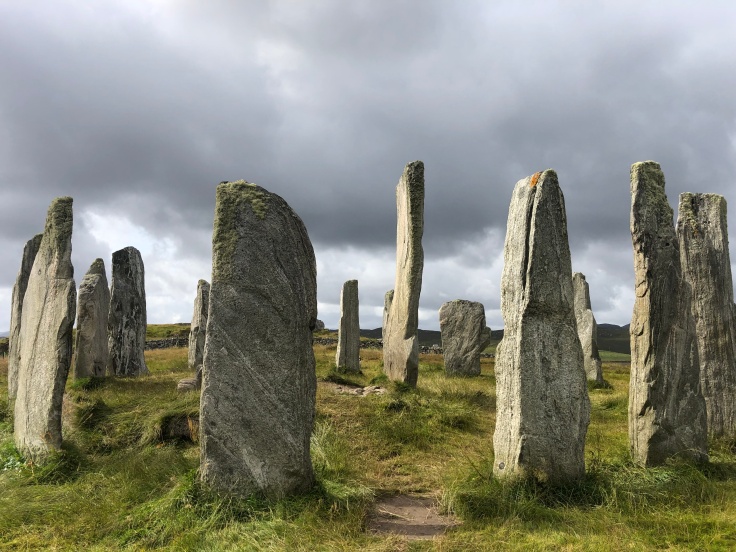
Also found on the Isle of Lewis is Dun Carloway Broch, a partial preserved structure dating to c. 1st Century AD, and would have been designed as a defensive structure. Though the roof has since been destroyed, the walls are intact.
Representing other trivia interest, the Isle of Barra hosted filming for the Ealing Comedy classic ‘Whiskey Galore!’ in 1947 – avid fans can download the film to enjoy in its original location!
In other film news, a monument to Hercules the Bear, who starred in James Bond’s Octopussy, is tucked into the Langass Community forest, on the Isle of North Uist. His true celebrity status was attained earlier, after successfully escaping in 1980 to explore the Outer Hebrides himself for over three weeks.
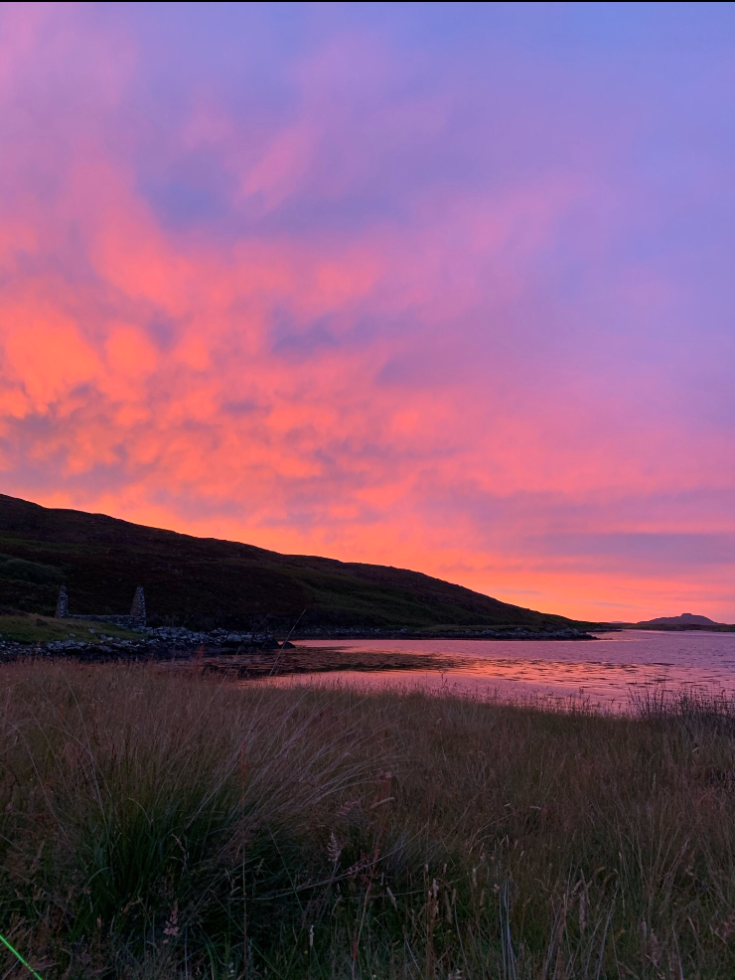
Food and Drink
On my trip, I primarily subsisted upon prepared rations, which were regularly re-supplied from the plentiful shops spread across the islands. Since I was driving, I could afford to allocate space towards a gas stove, and several cool bags. On a typical morning, we fried eggs, before preparing sandwiches for lunch, and then cooked either microwave rice or quick-cook pasta.
Should you opt to walk or cycle, food preparation and storage should be a major consideration, for comfort if nothing else.
Personally, I neglected to explore the local cuisines. Specialities were, perhaps unsurprisingly, seafood-related, with Tripadvisor providing an extensive guide. One remarkable feature of Harris and Lewis is their propensity for proudly brewing delectable gins and whiskeys.
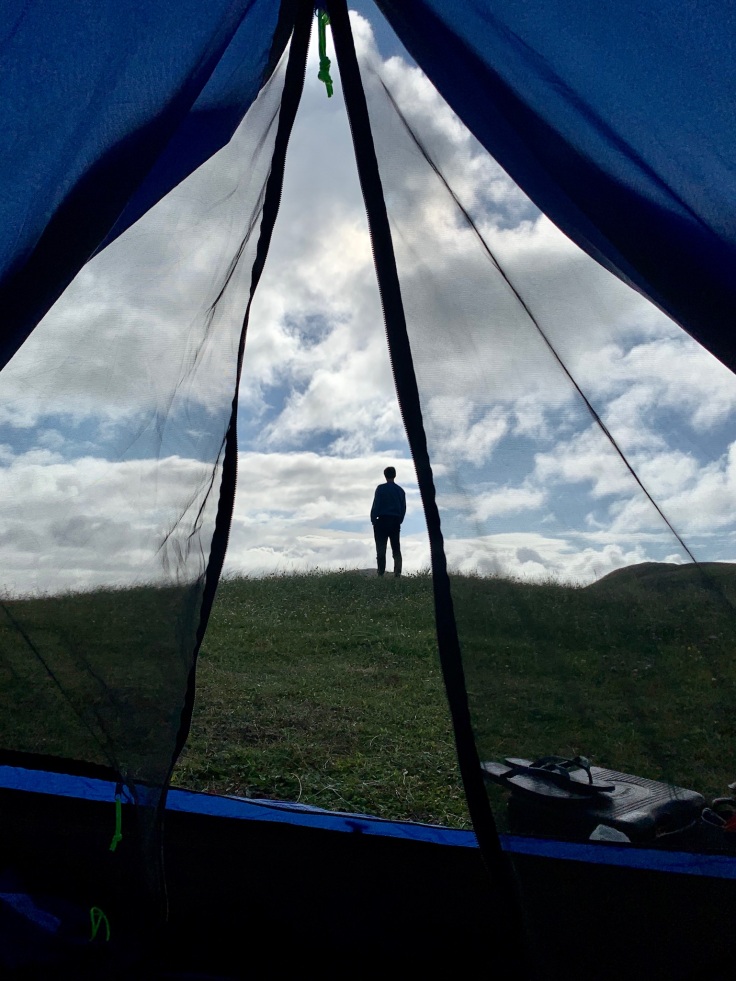
Weather in the Outer Hebrides
On a final note, when wild camping anywhere, anticipate the elements proving a significant adversary. The Outer Hebrides exemplify this fact.
It is wet. Very, very wet. Being a series of islands, they are routinely subjected to intensely volatile weather, which can include howling winds and torrential downpours, interspersed with sudden breaks of warm. Sustained bouts of rain were rare, though storms could roll in, materialising instantly, drench anything in their path, and fade into the horizon.

Thanks for reading! Hopefully you found this interesting or inspiring. I regularly post travel blogs, alongside short stories and brief commentaries, so stay tuned!
Whilst you’re here, why not check out the latest posts?
The ultimate victor is ‘sportswashing’
The 2022 men’s Football World Cup has finally drawn to a close, after several weeks of inane and underwhelming sport, where the greatest moments of excitement and controversy came off the pitch. Yes, Argentina won the tournament, but it would be difficult to crown any true champion other than the phenomenon of ‘sportswashing’. Spoken…
Me Time – a spectacularly weak entry into the buddy comedy genre
That pretty much summarises it all. Were it not for Kevin Hart repeatedly shouting the film’s title, you might forget which mediocre Netflix original was filling the space on your screen. Me Time unites Kevin Hart and Mark Wahlberg as the two leads, though neither develop their characters beyond their existing personas. The plot, if…
Our relationship with the environment must fundamentally change
I’ve been outside of the UK, but that hasn’t left me ignorant to the oppressive heatwave searing the country just weeks ago. Or perhaps a month ago. I actually have been distracted and have lost touch with domestic events. Anyway, historically, the heatwave was incredibly unusual. It should have been perceived as an alarming, panic-inducing,…
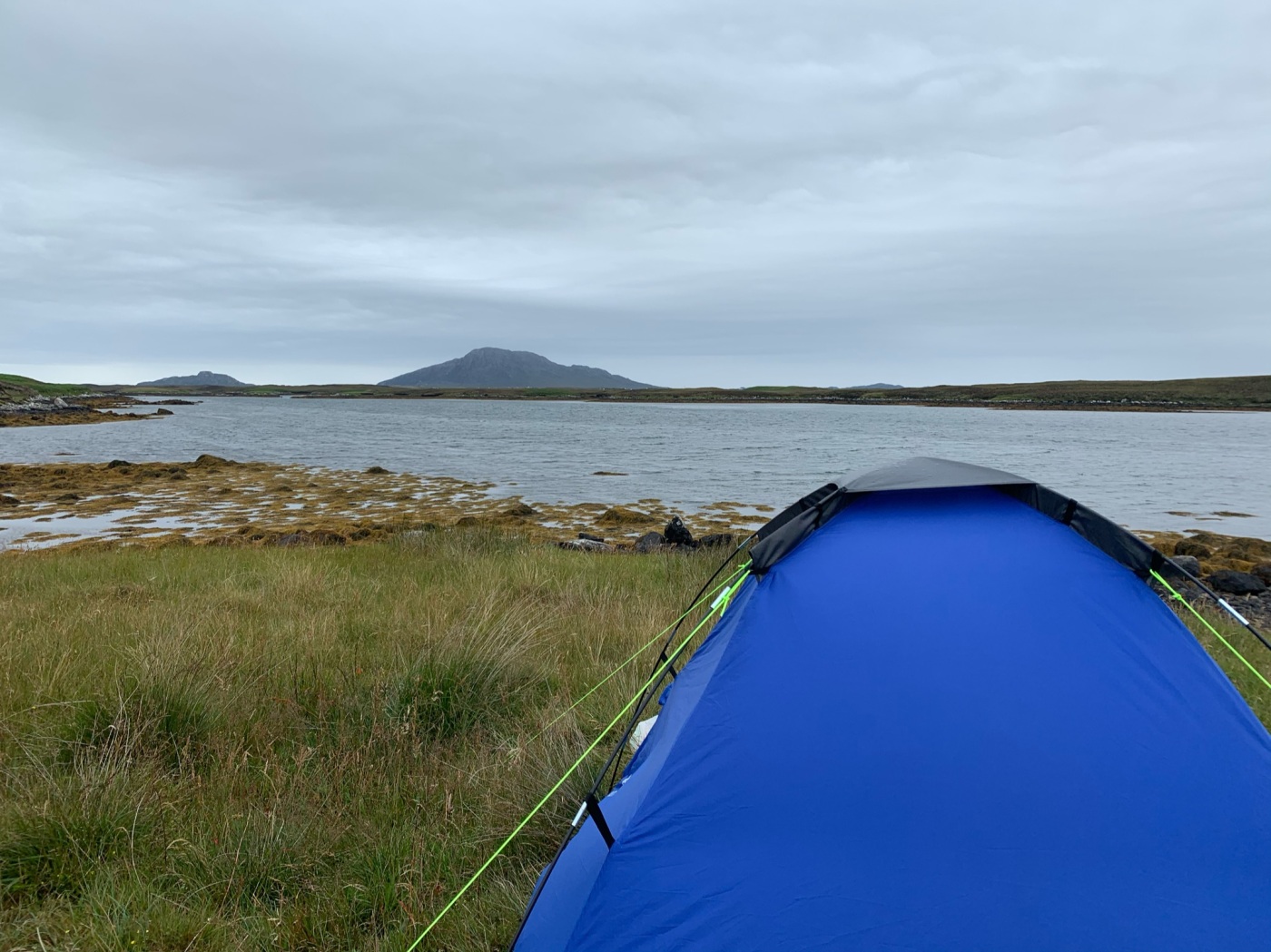
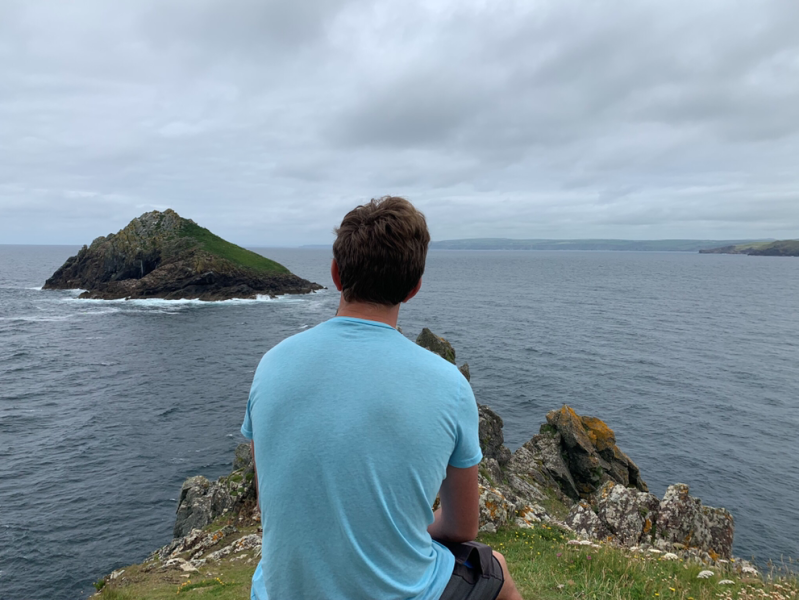


Love this. It captures 3 of my favorite things. Scotland, the outdoors & camping oh and wildlife too. I’m following as I want to read more 🙂
LikeLiked by 1 person
Thanks so much! I’m so glad you enjoyed – if possible, I will definitely be returning this summer. Scotland is remarkably gorgeous. Happy exploring, hope you enjoy more of the site!
LikeLike
I love this post, I’ve wanted to visit Scotland for a very long time but I’d never even heard of most of these places!! I will definitely come back to take notes of where we can wild camp there one day!!
LikeLiked by 1 person
Scotland is wonderful, and I’ll admit that, until last summer, I’d never heard of the Outer Hebrides either! The beaches are truly spectacular, and though I neglected to mention them all, I also stayed at Scarista beach, Traigh Bhostadh (Bosta), and Traigh Ghearadha (Gary) are all spectacular, all on Lewis-Harris. Luskentyre is very commonly recommended, and is pretty, though space is limited and understandably fills very quickly, so anticipate needing to arrive very early. Happy exploring!
LikeLike
Great post. I absolutely love the wildlife in Scotland. It was one of the best things about growing up here. So happy that others get to experience it too!
LikeLiked by 1 person
Thanks, I’m glad you enjoyed it! I was lucky enough to tour much of the mainland, too, so spent a couple of days in the Cairngorms and in Edinburgh too – whereabouts are you based?
LikeLiked by 1 person
I am based in Edinburgh, but have travelled a lot of Scotland and grew up in Aberdeenshire. My partner is from Ullapool in the highlands and I always love going up there to explore the area.
LikeLiked by 1 person
Ooh very nice, we briefly drove through Ullapool and the openness was glorious
LikeLiked by 1 person
Next time I head up Ullapool way, I definitely want to explore the areas around it more.
LikeLiked by 1 person
Love it! Not sure my other half would camp, but I’d love to explore these islands. The wildlife and the stunning scenery look well worth the trip.
Thanks for sharing!
LikeLiked by 1 person
It really is worth taking the time to see them! Camping certainly isn’t for everyone, but there were loads of villas and apartments being let particularly in South Uist that we passed. Thanks for reading!
LikeLiked by 1 person
I am a firm believer that there is no better way to connect with the wilderness and the great outdoors than to get out and stay in a tent. There is something about waking up in the morning, hearing the sounds of the wildlife around you – birds singing, the wind in the trees, etc. We do a lot of tent camping here in Canada and I wouldn’t trade it for anything, even the finest 5* hotel lol
LikeLiked by 1 person
Absolutely! Canada’s been on my bucket list for so long now too, I can only imagine how serene it must be there. I totally agree I’d much rather fall asleep to rain against tent fabric, than in a King Size bed. Thanks for reading!
LikeLike
I am not a camping-kind-of-girl myself (if you ask, possibly my worst nightmare) YET! – you might have even managed to change my mind on this! The pictures look breathtaking and I cannot wait to explore this side of Scotland! x
LikeLiked by 1 person
Haha I completely understand the appeal of sleeping outside is not universal, but there’s definitely something magical about being ensconced in a tiny cocoon, feeling the elements. Alternatively, the Hebrides can be explored in regular accommodation, and still look just as impressive!
LikeLike
Scotland is amazing and on my list to visit when everything gets back to normal. We used to camp and there is a lot to consider. Great post!
LikeLiked by 1 person
I’m glad you found it good inspiration! Camping anywhere is a wonderful way to connect with nature, and Scotland is especially beautiful – thanks for reading!
LikeLike
I’m so glad I came across this post. Hopefully once travel restrictions are lifted I can go camping and sight seeing in Scotland. There’s so much to see 😍
LikeLiked by 1 person
I’m glad you enjoyed it – Scotland’s really wonderful, and camping is an experience like no other. I hope you get to explore this summer!
LikeLike
Wow it looks so beautiful. I really want to go to Scotland. I’m not much of a camper but wouldn’t mind exploring outdoors. Siobhan ♡ | Vegan Babe Life
LikeLiked by 1 person
It’s a really lovely area, and there are definitely alternatives to exploring through wild camping, but it sometimes feels like the most intrepid! Hopefully you’re able to enjoy some adventures outside
LikeLiked by 1 person
That’s the kind of travel I enjoy! Nature, loneliness, walking… I ve been camping, but not free style. The only objection I find is the lack of facilities (well, closet in particular). But Lickisto glamping looks nice to stay and explore around. Thanks for sharing it, the route looks absolutely amazing.
LikeLiked by 1 person
It was absolutely gorgeous and serene, but we did spend two weeks living out of a car so couldn’t clean anything… Lickisto was very nice, and the glamping option looked great. I’m glad you enjoyed, thanks for reading!
LikeLike
camping is great. It allows you to stay in such lovely, remote places. That stone circle is great
LikeLiked by 1 person
Exactly, and wild camping presents the unique opportunity of not having to plan an accommodation itinerary – if the ground’s suitable and removed, then it’s perfect!
LikeLike
I am all about wild camping; it means you can go places where the beauty can be enjoyed without the distraction of the touring masses. Places that are off the beaten trail are usually the most unique and form personal memories to hold close.
I would love so much to be able to delve into all the pockets of the world. For now, I love it when I am able to travel briefly in photos. 🙂
LikeLiked by 1 person
It’s such a shame about current travel, and I’m with you in being desperate to get back out there – I completely agree that there’s nothing more thrilling than finding somewhere completely removed and feeling the rhythms of nature. Thanks for reading!
LikeLiked by 1 person
Fantastic post, Tom! I confess that camping is not for me, but I do love a good hike and really appreciate the great photos and helpful info you shared. I’d love to see Scotland one day!
LikeLiked by 2 people
I hope you’re able to explore too! I was stunned by how picturesque the plentiful beaches are, with some locations being genuinely dreamy, an attribute Scotland is not often credited with
LikeLiked by 1 person
Great info and gorgeous photos! The white beaches look amazing. And of course the prospect of enjoying wildlife and whiskies are appealing too.
LikeLiked by 2 people
It’s tough to know which is the more appealing… a combination of all three would be fantastic!
LikeLiked by 1 person
Next time try herring in rolled oats panfried
LikeLike
That sounds intriguing I’m hoping to be more experimental with my food in the future
LikeLike